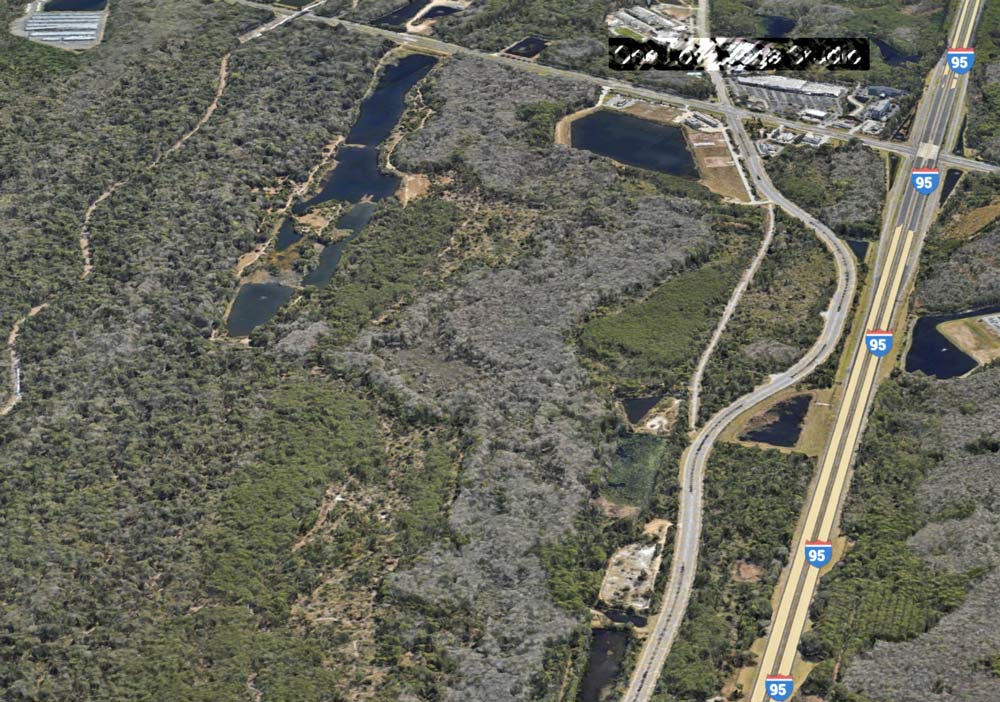
Coquina Shores, the 750-home development planned as a 505-acre gated community in a north-south rectangle north of State road 100 and east of Old Kings Road in Palm Coast, will be built with $65 million in infrastructure and run as its own community development district, or CDD, like Grand Haven and Hammock Dunes.
The Palm Coast City Council on Tuesday approved both the establishment of a CDD and the rezoning of Coquina Shores, what will be one of the city’s larger developments as it moves ahead to its next planning steps. Further details of the proposed development emerged in the latest–but not last–step before the council on Tuesday.
For all its size and its future impact on the area, the proposal drew no direct opposition or even public comments in a council chamber that had by then emptied of angry residents who had turned out to oppose a different initiative earlier in the meeting (the creation of a new fee on utility bills).
Nevertheless, during those earlier portions of the meeting, the city’s development boom drew a few rebukes that echoed a common theme whenever big new developments are proposed. “Our Planning and Community Development Department are overworked with hundreds of hours, with all these project for the developer,” one resident said. “I have this funny feeling. The developers, our engineering, our planning department, they run the city, they don’t hear us, they only hear the quote unquote, stakeholders.”
Hours after Celia Pugliese made that comment, Council member Theresa Pontieri picked it up: “I do want to respond to some of the concerns, a lot of the concerns from people here today with regards to new development,” Pontieri said. “Things like this, like the CDD, these are roads and infrastructure that will be paid for, they’re almost their own kind of self sufficient community. So we will not be paying for this development.”
“It’s not just the installation of the infrastructure, but it’s the ongoing maintenance and repair, so it goes on in perpetuity for the CDD.” Mayor David Alfin said.
The demand on services will be different with Coquina Shores, at least in some regards.
A Community development district allows the developer to obtain low cost financing by issuing tax exempt bonds. The city would not be a party to the financing and would not incur obligations for the infrastructure debt. Nor would it be responsible for building that infrastructure.
In essence, all the roads, drainage, sidewalks and other infrastructure in the development would be built and maintained by the CDD, and remain privately owned. (Neighborhood streets will be built on 50-foot-wide rights of way with a minimum of 22-foot-wide travel lanes). But the community will still rely on county fire and police services and schools, so property owners will not be exempt from any of the usual county and city taxes on their bills. They will, however, be exempt from the stormwater fee most residents and businesses pay, since Coquina Shores will have its own stormwater system.
Water and wastewater services will be provided by Palm Coast, and applicable impact fees will still apply.
Read Related Also: ‘Hideous and horrible’: Police allege man ‘mercilessly filmed the last moments’ of woman’s life in ‘stabbing’ snuff video posted on Facebook
Once the development is completed, it’s to be maintained and managed by an elected five-member board of supervisors–residents in the CDD. Debt payments are made through assessments on residents’ tax bills, to the county tax collector. All residents buying property within the CDD become obligated to assuming their share of that assessment.
Each single-family home will have a two-car garage. Common areas will be spread throughout the development, including open spaces, landscaped areas, active and passive recreation areas recreation, an amenity center, pocket parks, and sales centers. Pedestrian and bike paths, including a new, off-site trail for public benefit, will connect all internal pocket parks and community amenities with Palm Coast’s and Flagler County’s nearby trails, including the Lehigh Trail adjacent to the northern boundary–and the infamous psychedelic bridge to the south–along with State Road 100 sidewalks.
These will not be big houses. In keeping with recent years’ trends of older residents looking for downsized properties, lots will have a minimum width of 40 feet and be 4,800 square feet. Houses will have a minimum of 1,200 square feet, with front setbacks of 20 feet, back setbacks of 10, and side setbacks of just 5 feet. The houses will be concentrated on the east side of the rectangular acreage, along a half doen roads yet to be named, and toward the north, nearer the Lehigh Trail, with much of the land between Old Kings Road and the house clusters remaining in conservation.
There will be two access points on State Road 100, one of them for emergency vehicles only. The other will be gated. A concrete or masonry screening wall of up to 6 feet high will line the development’s frontage on 100.
An additional general access point on Old Kings Road will be completed at the end of Phase 2 (with emergency access permitted during Phase 2). The development will be built in three phases.
The development will provide the city the necessary right of way to include an aligned entrance on Old Kings Road where the city is also working on upgrading the interchange at Town center Boulevard and Old Kings Road.
The project had previously been approved as Development of Regional Impact, when it was entitled to build up to 2,400 homes and apartments, 50,000 square feet of retail use and 30,000 square feet of office use, plus a 150-room hotel. All that was set aside for the master-planned community that the council approved on second reading on Tuesday, limiting maximum development to 750 homes and discarding the retail and office uses. “There’s a reducing density of development here,” Senior Planner Jose Papa said.
The future land use map amendment the council approved “actually increases the conservation area that currently exists by about 10 acres,” or slightly more, Jay Livingston, the attorney representing the developer, said.
State and regional agencies reviewed the development plans. The city did not receive any comments from the reviewing agencies, resulting in no changes from the proposal the council approved on first reading a few weeks ago.










